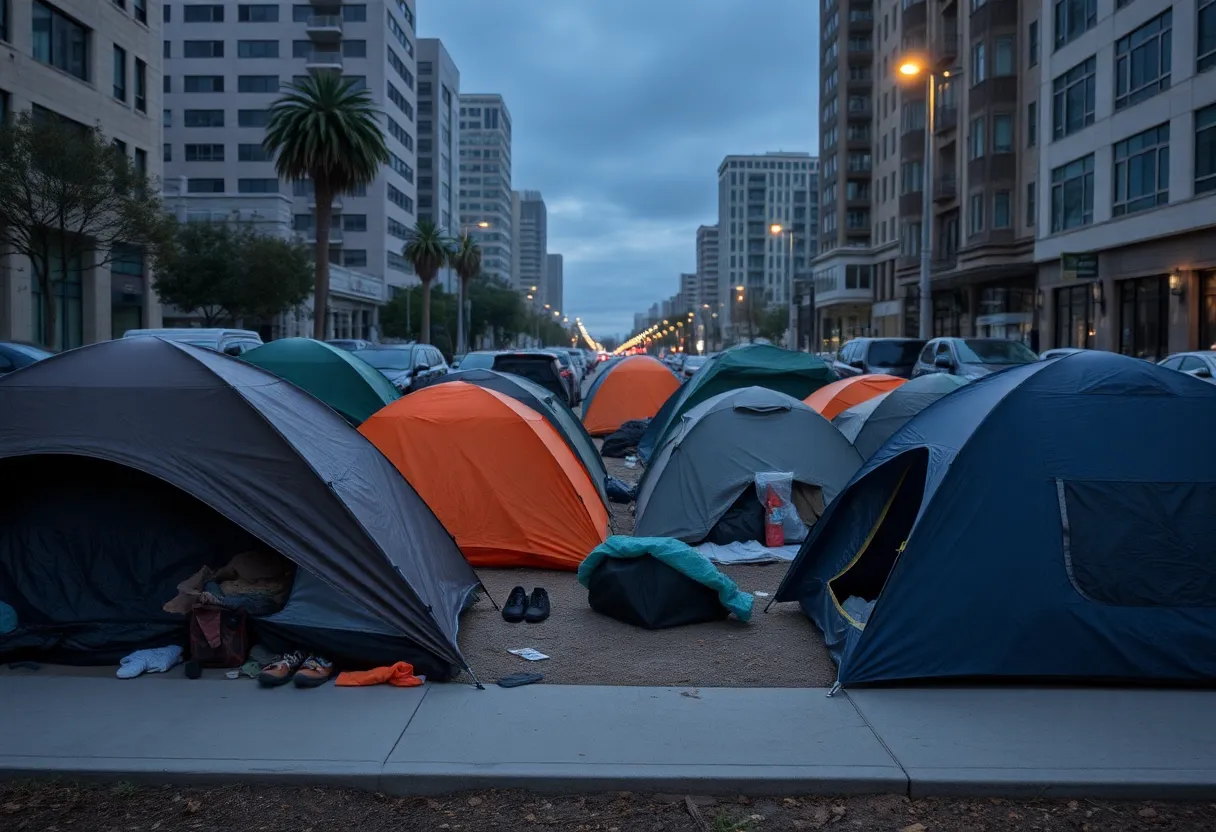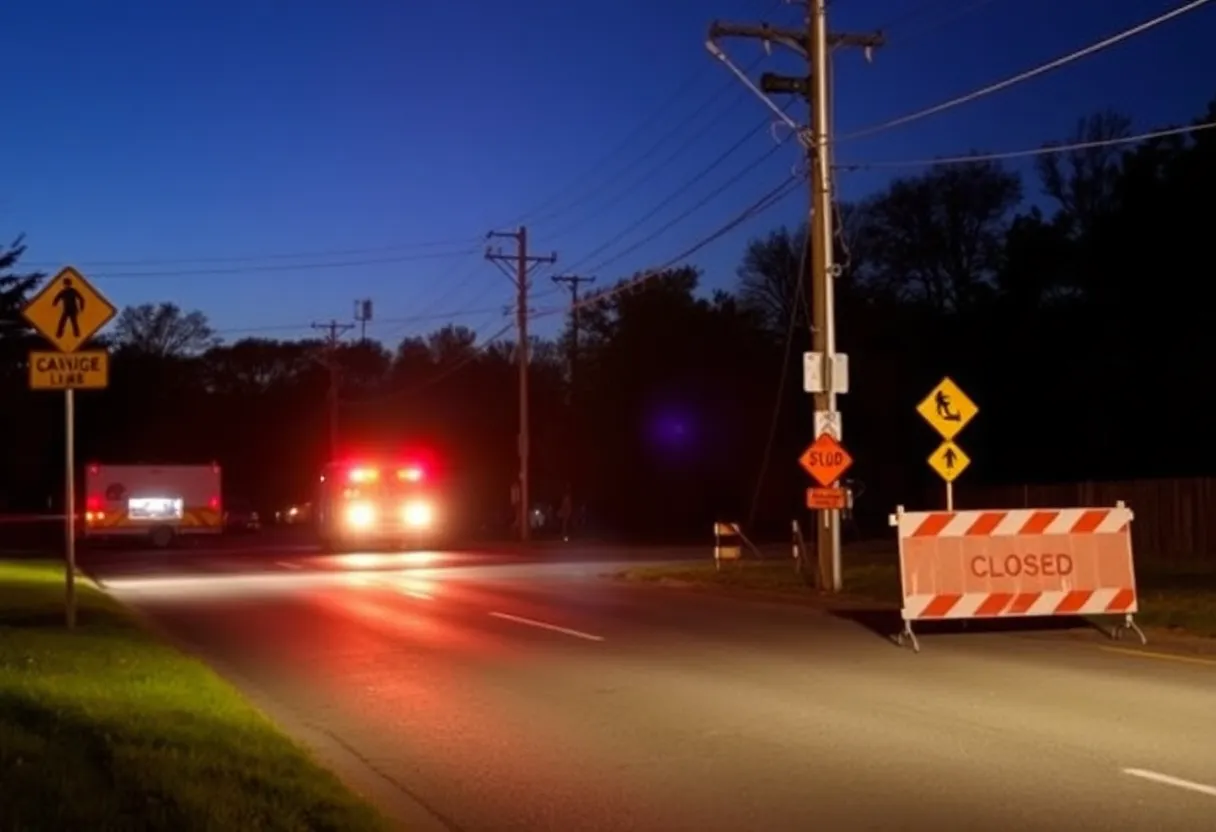News Summary
San Diego is grappling with a homelessness shelter crisis due to disputes between city and county officials, leading to a significant reduction in available shelter beds. The Rosecrans homeless shelter, which has halted new client intakes, is exacerbating the shelter shortage. With over 5,700 individuals living on the streets or in vehicles, and several other shelters also ceasing new intakes, urgent decisions are needed to address the situation. Additionally, funding cuts and planned demolitions pose further challenges to shelter operations and the support of vulnerable residents.
San Diego is facing a homelessness shelter crisis as disputes between city and county officials lead to a significant reduction in available shelter beds. With the Rosecrans homeless shelter in the Midway District halting new client intakes, already strained resources are becoming increasingly critical for the growing number of individuals seeking refuge.
The Rosecrans homeless shelter, which opened in 2022 and has a capacity of 150 beds, has specifically served residents with mental health issues. Bob McElroy, CEO of the Alpha Project, indicated that the current halt in new acceptances is unprecedented, particularly in his four decades of experience in the field. This closure leaves 14 beds vacant, which exacerbates the existing shelter shortage in the city.
In addition to the challenges posed by Rosecrans, the San Diego Housing Commission has stopped new intakes at eight other shelter programs. This suspension aligns with fears of Rosecrans’ potential closure, expected by the end of June. Recently, the shelter faced staffing issues with the resignation of two staff members who moved on to other job opportunities.
The urgency of the situation has been further complicated by Mayor Todd Gloria’s budget proposal made in April, which suggested cutting over $4 million annually in funding for the Rosecrans shelter. This decision was influenced by the county’s upcoming plans to demolish a nearby building, which has raised concerns about flooding risks and utility complications for the shelter. The adjacent county Health Services Complex is deteriorating and scheduled for demolition, adding to worries about the essential infrastructure for shelter operations.
Despite these challenges, county supervisors made a unanimous decision to allocate $800,000 toward new utilities for the Rosecrans shelter, with total estimated utility costs reaching up to $2 million. County leaders have been urged to seek additional funding sources in order to maintain the shelter’s operational viability.
Plans for the demolition of the nearby building are set to commence in March 2026 and are expected to involve hazardous material concerns, including asbestos. This chain of events has raised crucial questions about the future of the Rosecrans shelter and the city’s ability to address the burgeoning homelessness issue.
Currently, over 5,700 individuals are living in vehicles, tents, or on the streets across San Diego County, underlining the urgent need for shelter services. Notably, several prominent shelters, including facilities run by Father Joe’s Villages and the Lighthouse Interim Shelter, have also stopped accepting new residents. McElroy has cautioned that ongoing disputes may erode vulnerable residents’ trust in the support services designed to assist them.
The full financial implications and operational viability of the Rosecrans shelter remain uncertain as city officials continue to debate budget responsibilities with the county. The San Diego City Council has a pending deadline until July to resolve the budgetary issues concerning the shelter’s future.
In an effort to combat the homelessness crisis, a new shelter named Rachel’s Promise Center for Women and Children is set to open. Initially offering 50 beds, this facility is aimed at addressing the rising demand for accommodations for women and families facing homelessness. Plans are in place for the Rachel’s Promise center to eventually expand to a total of 210 beds, creating a safe space for women experiencing homelessness.
Additionally, the city of San Diego is preparing to sell a property currently utilized as the Homelessness Response Center to fund affordable housing initiatives. However, this move raises further implications for available services for the unhoused population. A discussion regarding the proposed sale of the Homelessness Response Center is scheduled for May 20, with plans for transitioning services to a new location by July 2025.
As the city wrestles with the growing homelessness crisis and disputes between officials, the fate of many vulnerable individuals hangs in the balance, waiting for critical decisions to be made regarding shelter space and support services.
Deeper Dive: News & Info About This Topic
HERE Resources
San Diego’s Culinary Scene Flourishes This Summer
San Diego County Reports 7% Decrease in Homelessness
Mayor Critiques Homelessness Count in El Cajon
San Diego City Council Approves Affordable Housing Project
San Diego County Reports Decline in Homeless Population
Southern California Sees Shift in Low-Income Thresholds
San Diego’s Struggle with Homelessness Highlighted by Urgent Stories
San Diego to Close Homelessness Response Center for Housing Development
California Surpasses Japan as the Fourth-Largest Economy
San Diego Plans to Market Old Central Library for Sale or Lease
Additional Resources
- San Diego Union-Tribune: Homeless Shelters Funding Dispute
- NBC San Diego: New Shelter for Women and Children
- Fox 5 San Diego: New Homeless Shelter for Young Adults
- Google Search: San Diego Homeless Crisis
- CBS 8: Father Joe’s Villages Acquisition








